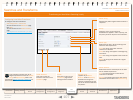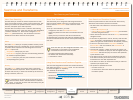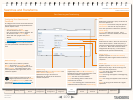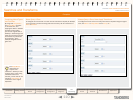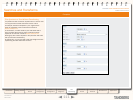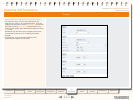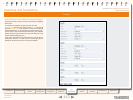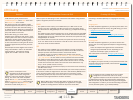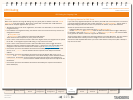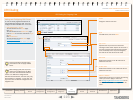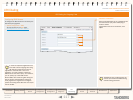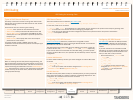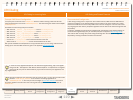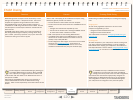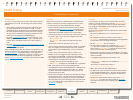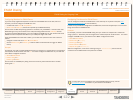
115
D14049.03
MAY 2008
Grey Headline (continued)
TANDBERG VIDEO COMMUNICATIONS SERVER
ADMINISTRATOR GUIDE
Introduction Getting Started
Overview and
Status
System
Conguration
VCS
Conguration
Zones and
Neighbors
Call
Processing
Bandwidth
Control
Firewall
Traversal
Maintenance Appendices
URI Dialing
URI Dialing for Outgoing Calls
Process
When a user places a call using URI dialing, they will typically dial an address in the form name@
example.com from their endpoint. Below is the process that is followed when a URI address is
dialed from an endpoint registered with your VCS:
The VCS will check its own list of registrations, and those of its Alternates, to see if the address 1.
is registered locally.
If the address is not registered locally, the VCS will check all its zones to see if any of them are 2.
congured with either:
an
•
AlwaysMatch, or
a
•
PatternMatch with a pattern that matches the URI address.
These zones will then be queried in priority order for the URI.
If one or more of the zones that contain a match are neighbor zones, the neighbor will be queried 3.
for the URI. If the neighbor supports URI dialing, it may route the call itself.
If one or more of the zones that contain a match are DNS zones, this will trigger the VCS to 4.
attempt to locate the endpoint through a DNS lookup. It does this by querying the DNS server
congured on the VCS for the location of the domain as per the DNS resolution process.
If the domain part of the URI address was resolved successfully using an H.323 Location SRV 5.
record (i.e. for _ h323ls) then the address returned is queried via an LRQ for the full URI
address.
If the domain part of the URI address was resolved using an H.323 Call SRV record (i.e. for 6. _
h323cs) or an A/AAAA record lookup then the call is routed directly to the IP address returned
in that record. An exception to this is where the original dial string has a port specied (e.g.
user@example.com:1720) in which case the address returned is queried via an LRQ for the full
URI address.
If the domain part of the URI address was resolved successfully the request is forwarded to 7.
those address(es).
Conguring Matches for DNS Zones
If you wish locally registered endpoints to be able to place URI calls via the VCS, then at a minimum
you should congure a DNS zone with a match that has a Mode of AlwaysMatch. This will result in
DNS always being queried, but will mean it is queried for all aliases, not just URI addresses.
To lter the queries sent to the DNS server:
congure a DNS zone with a match that has a
•
Mode of PatternMatch
use the
•
Pattern string and Pattern type elds to dene the aliases that will trigger a DNS query.
For example, a match with a Pattern string of *@* and a Pattern type of Regex will mean that DNS
is only queried for aliases in the form of typical URI addresses.
To set up further lters, congure the remaining matches in the same DNS zone. You don’t need to
create new DNS zones unless you want to congure more than the maximum of 5 matches.
You should create separate DNS zones if you want to lter based on the protocol (SIP or H.323) or
hop count to be used.



